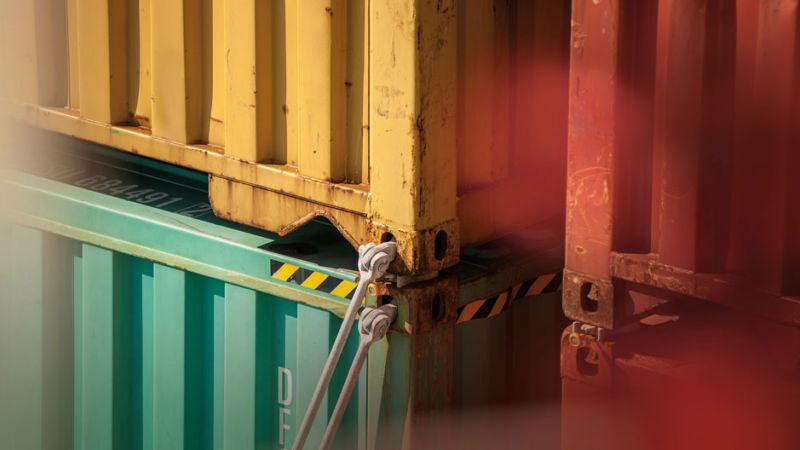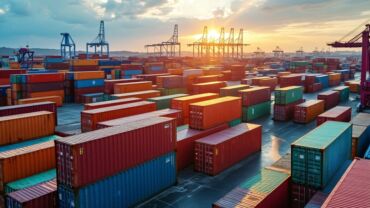The latest Harmonized System review ensures that the nomenclature stays up to date in light of new technology, new product streams, and emerging global issues
This article was written by Paul Horowitz, Senior Legal Editor at Thomson Reuters Practical Law
Every five years, the World Customs Organization (WCO), an international body comprised of representatives from 183 customs administrations worldwide, undertakes a general review of the Harmonized Commodity Description and Coding System (Harmonized System or HS), a product nomenclature developed by the WCO that serves as a basis for the tariff schedules of more than 200 countries and economies around the world.
These reviews are intended to ensure that the HS stays up to date in light of new technology and provides visibility into new product streams and emerging global issues.
The most recent review cycle began in 2017 and concluded on June 28, 2019, when the WCO adopted approximately 350 sets of amendments relating to a wide variety of products and product groups. These amendments are scheduled to take effect on January 1, 2022, when the seventh edition of the HS (commonly referred to as HS 2022) enters into force.
The key factors driving the HS 2022 amendments include:
-
-
- advances in technology;
- new product streams;
- changing trade patterns;
- environment considerations;
- health and safety;
- the fight against terrorism; and
- facilitating implementation of various international Conventions.
-
Many of these factors are related. For example, advances in technology can lead to new product streams and changing trade patterns, while environmental, health, and safety concerns often implicate goods controlled under international Conventions.
The Harmonized System
Though not an exhaustive list of products, the HS is nevertheless an extensive product nomenclature comprised of more than 5,000 commodity groups of internationally traded goods, ranging from non-manufactured goods, such as animal, vegetable, and mineral products, to manufactured and other highly processed goods.
Related product categories are grouped into Sections, which, in turn, are further sub-divided into Chapters. Tariff numbers in the HS start at a four-digit level, known as headings, which broadly describe goods. Headings are then broken down into narrower categories, known as subheadings, at a six-digit level. Contracting parties to the HS use an identical nomenclature through the six-digit level, thus facilitating a level of uniformity in the tariff classification of goods.
Countries may adopt additional, more specific breakouts in their national tariff schedules. The Harmonized Tariff Schedule of the United States (commonly referred to as the HTSUS or, more simply, the HTS) assigns duty rates at an eight-digit level and extends classifications to a ten-digit level that is used for statistical reporting and the collection of trade data.
Since the inception of the HS in 1988, the WCO has conducted six general reviews. These reviews determine whether amendments should be adopted to ensure that the HS reflects advances in technology, changes in trade patterns, and new product streams.
National customs and trade authorities, often with input from the private sector and international organizations such as the Food and Agricultural Organization of the United Nations, bring proposals for amendments to the WCO for consideration. Proposals are first reviewed by a WCO subcommittee, which sends certain proposals for further consideration by the WCO’s Harmonized System Committee. This committee votes on whether to forward proposals to the WCO Council, which is the WCO’s supreme decision-making body — made up of the Directors General of the 183 WCO member customs administrations. The WCO Council then votes on whether to approve amendments.
Results of the WCO review for HS 2022
The HS 2022 amendments include, among other changes, new headings and subheadings, modified article descriptions, and new or revised legal notes. The following examples illustrate how the HS 2022 amendments address various concerns identified at the WCO.
Environmental impacts
Electronic waste (e-waste) — Due to the potentially harmful environmental impact (and high trade value) of electronic articles that are at the end of their useful life, a new heading for e-waste and subheadings for the main categories of e-waste were added to provide greater visibility and assist WCO member countries in their work under the Basel Convention, which focuses on controlling the transboundary movement of hazardous wastes and their disposal.
Gases controlled under the Kigali Amendment of the Montreal Protocol — A new Section Note and heading were added to help parties to the Montreal Protocol implement the Kigali Amendment, which aims to reduce production and consumption of hydrofluorocarbons worldwide.
Changing trade patterns
Smartphones — A new subheading was added for smartphones, and a new Chapter Note was added to define the scope of this term.
Unmanned aerial vehicles (drones) — Specific provisions for these products were added to simplify their classification.
Novel tobacco and nicotine-based products — Due to their high monetary trade value (and to address a lack of visibility in trade statistics and previous difficulties in classifying these articles), new provisions were added for tobacco products intended for inhalation without combustion.
Technology & product innovations
Heavy-duty vehicles with electric motors — Under previous revisions in HS 2017, certain motor vehicle provisions were redrafted and renumbered to provide separately for hybrid electric, plug-in hybrid, and all-electric motor vehicles. Similarly, HS 2022 expands provisions for certain tractors and motor vehicles for the transport of goods to include new subheadings for partial and fully electric heavy-duty vehicles.
3D printers — A new heading for “Machines for additive manufacturing” was added to account for 3D printers, and subheadings were added that differentiate the machines based on the type of deposit; for example, by metal deposit, by plastics or rubber deposit, or by plaster, cement, ceramics, or glass deposit.
Health & Medical Research
Rapid diagnostic kits — In recognition of the dangers that can result from delays in deploying tools for rapidly diagnosing infectious diseases, changes were made to the provisions for test kits for detecting the Zika virus and other mosquito-borne diseases to simplify their classification.
Placebos and clinical trial kits — To facilitate cross-border medical research, new provisions were added for placebos and double-blinded clinical trial kits to enable their classification without information about placebo ingredients.
Cell cultures and cell therapy — New provisions have been added for these products.
Fight against terrorism
Dual-use goods — New subheadings have been added for various dual-use goods that could be diverted for unauthorized uses, such as radioactive materials, biological safety cabinets, and parts required for the construction of improvised explosive devices, such as detonators.
Materials controlled under international conventions
The WCO has noted that international Conventions, agreements, and initiatives often rely on the HS for practical implementation at borders. HS 2022 includes new subheadings for certain:
-
-
- chemicals controlled by the Organization for the Prohibition of Chemical Weapons, the implementing body for the Chemical Weapons Convention;
- hazardous chemicals controlled under the Rotterdam Convention;
- persistent organic pollutants controlled under the Stockholm Convention; and
- fentanyl-opioid substances and their derivatives controlled by the International Narcotics Control Board.
-
Companies engaged in cross-border trade should review the HS 2022 amendments — and, if importing into the U.S., the U.S. International Trade Commission’s recommendations to the President for conforming modifications to the HTSUS — to determine if and how these changes may impact their product classifications.
Companies should also take this opportunity to examine their tariff classification processes generally to ensure they classify their goods correctly when HS 2022 goes into effect on January 1, 2022.








